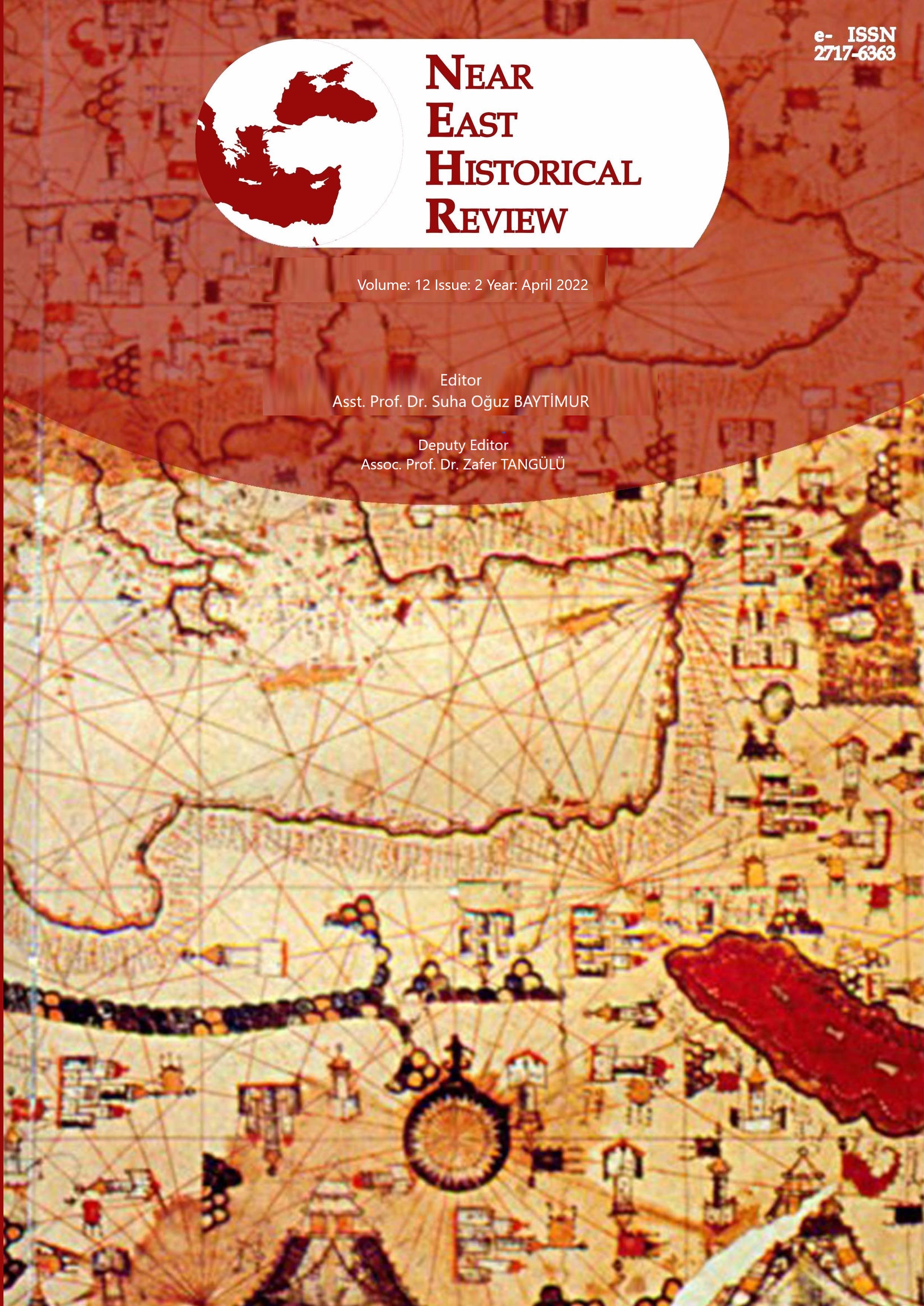Author :
Abstract
- Yüzyılın sonu ile 20. Yüzyılın başındaki yıllarda Çarlık Rusya’sında yaşayan Türkler arasında Usul-i Cedid adı verilen batı modelinde eğitim-öğretim ve din alanında yenileşme hareketleri yaşanmıştır. Bu hareketlerin ortaya çıkmasında 1800’lerin ortalarında başlatılan Panslavizm uygulamaları etkili olmuş; Ruslaştırma ve Ortodokslaştırmaya yönelik zorlamalar nedeniyle Çarlık Rusya’sı içinde kalan Türkler, varlıklarını koruyabilmek için “Millî değerlere dönmek” düşüncesine yönelmişlerdir. 20. Yüzyıl başına gelindiğinde, eğitim-öğretim, din alanları ile birlikte sosyal ve kültürel yenilik hareketleri de başlamıştır. Bu dönemde Usul-i Cedidin ilk uygulayıcısı olan İsmail Gaspıralı’nın çıkardığı “Tercüman” gazetesi, “Dilde, Fikirde, İşte Birlik” sloganıyla bu düşüncenin sözcülüğünü yapmıştır. Ayrıca Tercüman’da Türk dünyasının tanınmış aydınlarından yazanlar olmuştur. Bu dönemde 1904-1905 Rus-Japon savaşında yenilen Çarlık Rusya’sında 1905 Devrimi yapılmış, bu yüzden Çar II. Nikolay, meşruti bir yönetimi (Duma) kabul etmek zorunda kalmıştır. Böylece siyasi partiler yasallaşmış ve ardından ülke genelinde seçimler yapılmıştır. Cedidçilerin önderliğinde, Rusya Türkleri de hem resmi temsilcilerini seçmek hem de siyasi, toplumsal ve dini haklar elde etmek için 1905-1917 yılları arasında beş kongre gerçekleştirmişlerdir. Diğer taraftan Ekim 1917 Bolşevik devriminden sonra Rusya sınırların içindeki halklara kendi kaderlerini tayin etme hakkı verileceği sözü üzerine birçok Türk cumhuriyeti kurulmuştur. Bu çalışmada Cedidçiler ile 1905-1917 Rusya Müslümanları kongreleri ve Bolşevik devrimi sonrasında kurulan Türk Cumhuriyetleri arasındaki bağlantılar ele alınacaktır.
Keywords
Abstract
Between the end of the 19th century and the beginning of the 20th century, among the Turks living in Tsarist Russia, there were reform movements in the field of education and religion in the western model, called "Usul-i Cedid". The Panslavism practices that started in the mid-1800s were effective in the emergence of these movements; The Turks, who remained in Tsarist Russia due to the compulsions for Russification and orthodoxy, turned to the idea of "returning to national values" in order to preserve their existence. At the beginning of the 20th century, social and cultural innovation movements started together with the fields of education and religion. In this period, the newspaper "Tercüman", published by İsmail Gaspıralı, who was the first practitioner of the method-i Cedid, acted as the spokesperson for this idea with the slogan "Unity in Language, Idea, and Work". In addition, there were some well-known intellectuals of the Turkish world who wrote in Tercüman. In this period, the 1905 Revolution took place in Tsarist Russia, which was defeated in the 1904-1905 Russo-Japanese War, so Tsar II. Nicholas had to accept a constitutional constitution and parliament (Duma). Thus, political parties were legalized and elections were held throughout the country. Under the leadership of the Jadidists, the Russian Turks held five congresses between 1905 and 1917 in order to elect their official representatives and to obtain religious, political and social rights. On the other hand, after the October 1917 Bolshevik revolution, many Turkish republics were established on the promise that the peoples within the borders of Russia would be given the right to self-determination. In this study, the connections between the Jadidists and the Turkish Republics established after the 1905-1917 Russian Muslims Congress and the Bolshevik Revolution will be discussed.
Keywords
- Abdurrahman, Varis, “Doğu Türkistan’daki “Cedidçilik” Hareketi ve Ahmet Kemal İlkul”, Türk Yurdu, 21/170, 2001, s. 51-58.
- Ayvazoğlu, Beşir, “Gaspıralı İsmail Bey Dilde, Fikirde, İşte Birlik”, Türk Yurdu, 8/7, 1987, s. 11-15.
- Akçura, Yusuf, Üç Tarz-ı Siyaset, TTK Basımevi, Ankara 1991.
- Andican, A. Ahat, Cedidizm’den Bağımsızlığa Hariçte Türkistan Mücadelesi, Emre Yayınları, Tunç Matbaacılık A.Ş., İstanbul 2003.
- Andican, A. Ahat, Değişim Sürecinde Türk Dünyası, Emre Yayınları:58, Has Matbaacılık, İstanbul 2006.
- Ayda, Adile, Sadri Maksudi Arsal, Mas Matbaacılık, Ankara 1991.
- Baymirza, Hayit, “20. Yüzyılda Türkistan’ın Millî Ve Sovyet Devletlerinin Karakterleri”, X. Türk Tarih Kongresi’nden ayrıbasım, TTK Basımevi, Ankara 1991, ss. 787-801.
- Benningsen, Alexandre; Ouelquejay, Chantal, Sultan Galiyev Ve Sovyet Müslümanları, Cantekin Matbaası, İstanbul 2005.
- Coşgun, Melih, “Ekim Devrimi’ne Açılan Kapı: Rus Modernleşmesi”, Akademik Bakış Uluslararası Hakemli Sosyal Bilimler Dergisi, Sayı: 44, 2014.
- Devlet, Nadir, Unutturulan Türkçü, İslamcı, Modernist İsmail Gaspıralı, Başlık Yayın Grubu, Ada Ofset, İstanbul 2011.
- Devlet, Nadir, Rusya Türklerinin Millî Mücadele Tarihi (1905-1917), TTK Basımevi, Ankara 1999.
- Kakınç, Halit, Sultangaliyev, İmge Kitabevi, Ankara 2011.
- Kara, Abdulvahap, Türkistan Ateşi-Mustafa Çokay’ın Hayatı ve Mücadelesi, Da Yayıncılık, Erkam Matbaası, İstanbul 2002.
- Kırımlı, Hakan, “İsmail Bey Gaspıralı Ve “Birlik” Kavramı Üzerine”, İsmail Bey Gaspıralı Ve Ziya Gökalp Sempozyumları Bildiriler, Yayına Hazırlayan: H. Dündar Akarca, Türksoy Yayınları No:19, Güney Repro Matbaacılık Tic. Ltd. Şti., Ankara 2003.
- Koçar, Çağatay, Türkistan ile ilgili Makaleler, Kültür Bakanlığı Yayınları/1272, Kamer Matbaacılık, Ankara, 1991.
- Köseoğlu, Nevzat, Türk Dünyası Tarihi Ve Türk Medeniyeti Üzerine Düşünceler, Ötüken Neşriyat A.Ş., İstanbul 2012.
- Özcan, Azmi, “Mir Said Sultan Galiyev”, DİA, Cilt 30, İstanbul 2005, ss.130-132.
- Şahingöz, Mehmet, İsmail Bey Gaspıralı ve Salnâme-i Türkî Risalesi, İsmail Bey Gaspıralı İçin, Baş editör: Hakan Kırımlı, Ankara 2004.
- Şahingöz, Mehmet; Tekinsoy, Yunus Emre, Yirminci Yüzyılın İlk Çeyreğinde Türk Dünyası'nda Milli Hâkimiyeti Gerçekleştirmeye Yönelik Girişimler, TBMM’nin Açılışının 101. Yıl Dönümünde Tür Demokrasi Tarihi Yazıları, Editörler: İsmet Türkmen vd., Berikan Yayınevi, Ankara 2021.
- Togan, Zeki Velidi, Bugünkü Türkili (Türkistan) ve Yakın Tarihi, C.I, Arkadaş, İbrahim ve Güven Basımevleri, İstanbul 1942-1947.
- Türkoğlu, İsmail, “Müslüman Kongreleri”, DİA, Cilt 32, İstanbul 2006, ss.96-98.
- Yalçınkaya, Alaeddin, Sömürgecilik, Pan-İslamizm Işığında Türkistan, Lalezar Kitabevi, Ankara 2006.
- Yüksel, Zuhal Yüksel, “Gaspıralı Ve Dil Birliği”, İsmail Bey Gaspıralı Ve Ziya Gökalp Sempozyumları Bildiriler, Yayına Hazırlayan: H. Dündar Akarca, Türksoy Yayınları No:19, Güney Repro Matbaacılık, Tic. Ltd. Şti., Ankara 2003.





